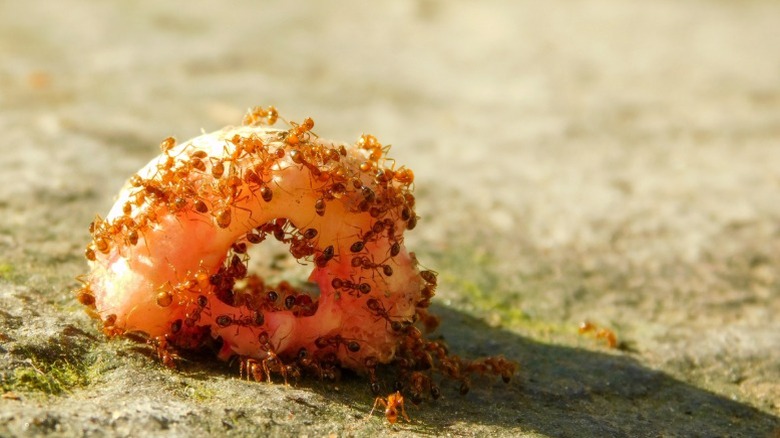The Type Of Ant That Can Wreak Havoc In Your Greenhouse
With so many types of ants you may find in the home and garden, it can be dizzying to remember which ones are good and which ones are bad. Not all ant species are pests. In fact, some, like pyramid ants, can be beneficial if kept around. When it comes to little fire ants (Wasmannia auropunctata), however, you do not want to see one of them running around your greenhouse. These tiny stinging ants are more than just a minor nuisance. The large red welts caused by their sting can be seriously painful and intensely itchy. Unfortunate pets and livestock that get stung in the eye can become blind with several stings.
Native to Central and South America, little fire ants are invasive in the U.S. and other parts of the world, including Canada. Not to be confused with another type of fire ant, the red imported fire ant (Solenopsis invicta), little fire ants have spread as a result of the transportation of infested materials like plant parts, soil, and agricultural products. As of 2025, they have spread to several U.S. states, including California, Florida, and Hawaii. Very tiny, almost invisible to the naked eye, little fire ants make nests in trees but survive on the ground, in potted plants, and in ornamental foliage. Unfortunately, even in colder climates, little fire ants can infest and survive in greenhouses.
Managing and preventing fire ants in your greenhouse
Some of the sneaky tricks you need when dealing with ant nests may not be enough if you have a serious infestation of little fire ants. These pests can reach high numbers very quickly, as many as 90 million ants per acre. Putting out chemical bait to control these invasive ants is important because each colony can have multiple queens present. Granular ant bait, including products with hydramethylnon, can help eradicate colonies. Contact sprays can kill workers on sight.
At this time, reports indicate the presence of little fire ants in California, Florida, Texas, Arkansas, Alabama, and Hawaii. Records of their presence indoors have been found in Illinois. Whether you live in one of those states or not, there are steps you can take to avoid an infestation. If you are planning to build a backyard greenhouse soon, consider finding ways to keep little fire ants out. Many of these preventative methods work for a variety of ant species, too. Little fire ants enjoy certain conditions, mainly warm, moist shade. Minimizing the moisture that pools in your greenhouse is vital. Additionally, try to keep things tidy. These ants will readily move into places like accumulated leaf litter, rotting wood, and underneath pots.

